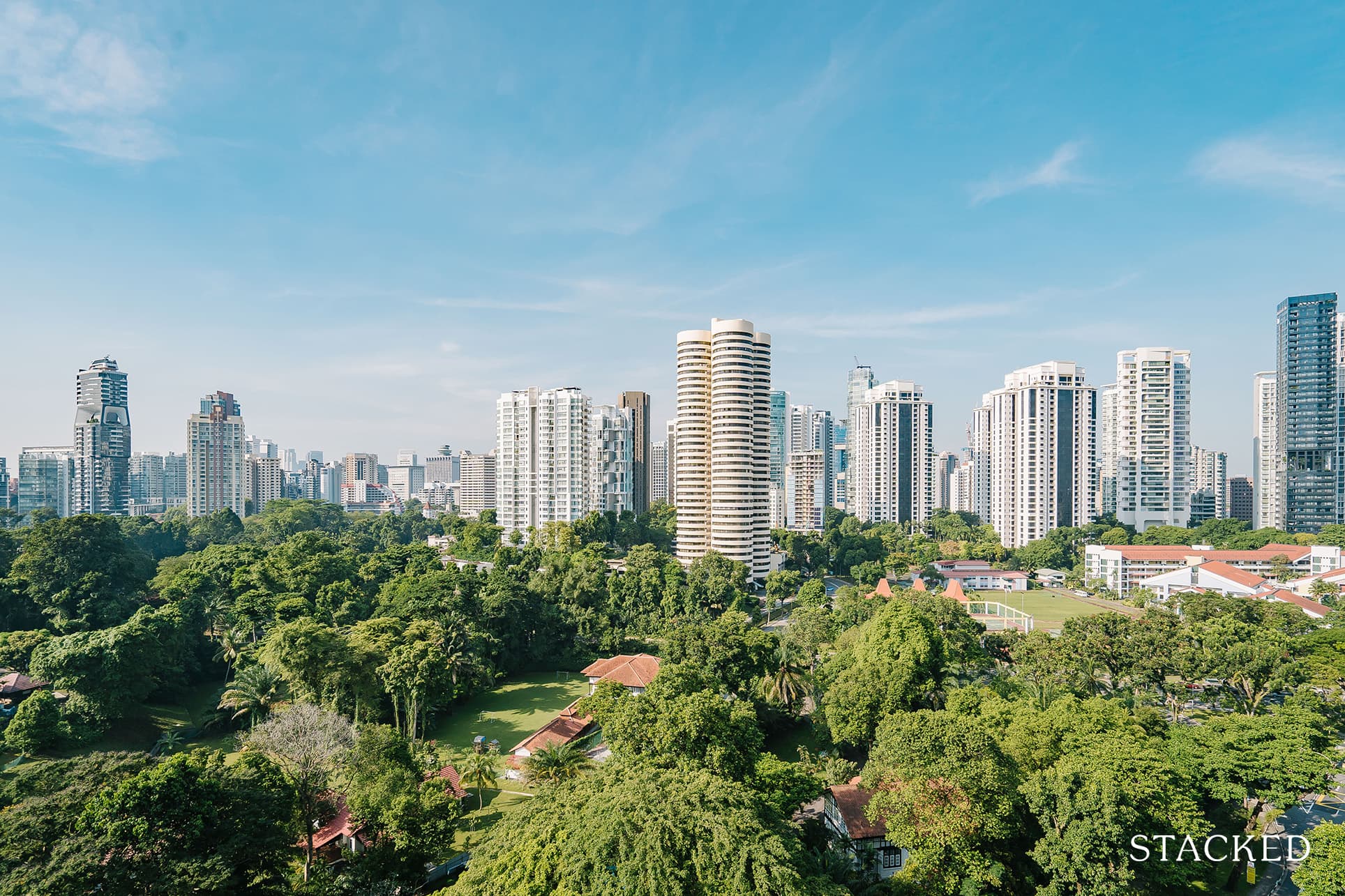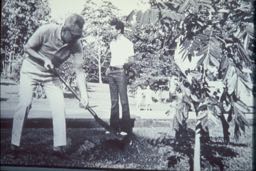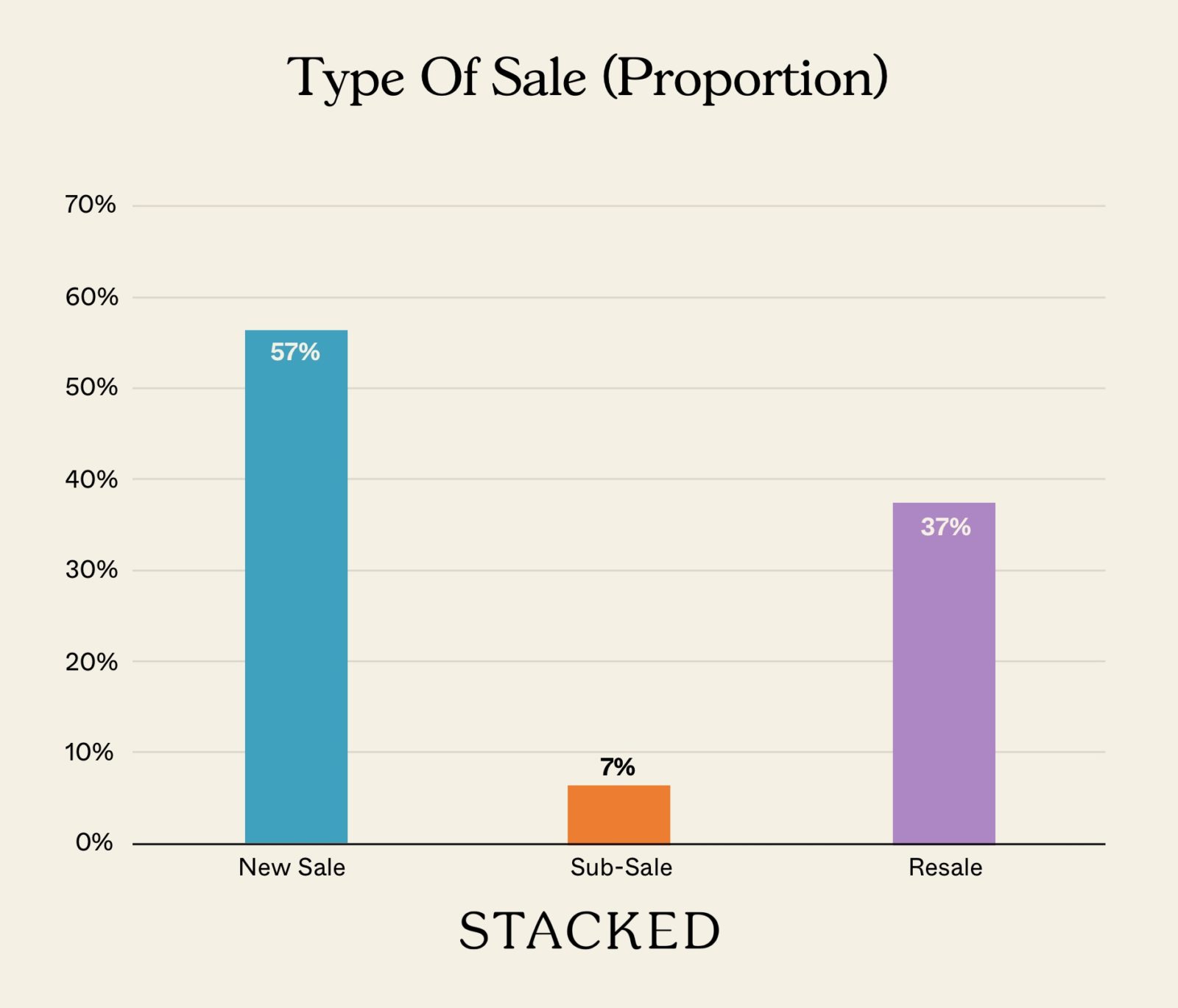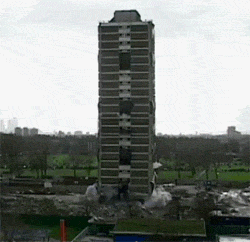The Fascinating Story Of How We Ended Up With So Many Trees In Singapore

Get The Property Insights Serious Buyers Read First: Join 50,000+ readers who rely on our weekly breakdowns of Singapore’s property market.
How Singapore became a garden city
I came across this excerpt that was posted from Lee Kuan Yew’s memoirs, where he talks about how the emphasis on trees came about in Singapore.
He visited both Paris and London, and was surprised to see how different they both were. Paris had their expressways lined with trees, while London had grass that was unkempt and overgrown with weeds.
He also wasn’t impressed by the size of their buildings, but the standard of their maintenance.
Cracked washbasins, leaking taps, and overgrown gardens were a telltale sign that the country wasn’t ran well.
As such, he realised the need for Singapore to promote itself as a tropical garden city (to stand out in a Third World region). By keeping the country clean and green it would create a good impression, and in turn, attract businesses to set up shop in Singapore.

So, he set up a department dedicated to the care of trees, and senior officers of the Government were involved in the creation of the “clean and green” movement.
It wasn’t easy at first. They needed to stamp out old habits of people who walked over plants, or worse yet, stole them.
The natural conditions of Singapore also didn’t help. He had to invite a plant and soil expert from overseas to find out what we could do better in our tropical environment and implemented the findings.
By the 1970s, the clean and green campaign had born fruits.
CEOs contemplating investment in Singapore would visit before they made their decision. Believing in the power of first impressions, he ensured the roads from the airport to their hotels and his office were spotless and lined with trees.
Upon entering the Istana grounds, they found a green oasis amid the city’s hustle: a 90-acre spread of well-manicured lawns, woodlands, and a golf course nestled within. This spectacle silently conveyed Singapore’s competence, discipline, and reliability, reassuring CEOs of the potential workforce’s skill adaptability.
This unique approach resulted in American manufacturing investments surpassing those from Britain, the Dutch, and Japan. Singapore’s garden city image successfully attracted global businesses.
For me, it’s a remarkable reminder of just how much foresight he had. While I’m sure that there are other reasons, this was an underrated one that laid the foundations for where Singapore is today.
Look at all our new condos, and see how much emphasis is now placed on greenery as well. Sometimes, it’s the little things and the impressions that it can play and add to the value of real estate as an asset.
Meanwhile, the battle for parking space is reaching a fever pitch in landed enclaves.
Now I understand some people will roll their eyes and complain about rich people defending their privilege, etc. But to be fair, there are some real issues faced by landed owners.

Last week I was told a story that dates back to 2004. This was when someone disrupted a church service in the Siglap area, due to frustrations over people blocking the driveway.
I was told in confidence that, within the same area, there was a case of someone passing away, because they couldn’t get to the hospital due to cars blocking the driveway and roads.
These days the Siglap area is much improved, with a traffic warden there on Sundays to control the flow of cars. But it does raise the issue of hazards posed by these narrow roads, and whether they’re going to be an ongoing issue going forward. I’m pretty sure that, for landed homeowners, what makes it tougher will be the public perception that they’re wealthy and less deserving of sympathy*.
More from Stacked
Here’s how long a millennial will take to save for a down payment of a condo in Singapore
A recent survey conducted by Apartment List found that Millennials looking to buy their first home may face up to…

*Incidentally, there are people who live in landed homes who are far from rich. Some of them only have that property because it was inherited, from a time when landed homes were much cheaper.
Nevertheless, this parking issue is one that not just landed homeowners are facing, but condo owners as well. I’ve heard of some new launch buyers who have been shocked that their condo doesn’t come with visitor parking lots, or that they won’t be able to own more than one car.
This issue could be solved in the near future given the high COE prices, but perhaps it won’t be surprising that we could follow what has been happening in Hong Kong. Car park lots are not a given in some developments, and you’d have to pay for the car park lot separately (so it’s also an asset that you can sell).
In other serious property news this week…
- We checked out the upcoming BTO launch sites for August, and they’re looking good.
- There are, in fact, freehold condos below $1,000 psf even in 2023. Here’s a list.
- Take a look at how condo layouts have changed over time, before deciding you’re happy with an older or newer project.
- If you think this is the peak and new condo prices may be about to drop, I hate to disappoint you; but I doubt so for now.
Weekly Sales Roundup (10 – 16 July)
Top 5 Most Expensive New Sales (By Project)

Top 5 Cheapest New Sales (By Project)

Top 5 Most Expensive Resale

Top 5 Cheapest Resale

Top 5 Biggest Winners

Top 5 Biggest Losers

Transaction Breakdown

My Favourite Links Of The Week:
– Mixed-use properties are now residential, or for the purposes of foreign ownership.

The Ministry of Law and the Singapore Land Authority have tweaked the Residential Property Act (RPA): Developments with both a commercial and residential aspect – like some shophouses, as well as malls with apartments – are no longer designated as “non-residential” in land use zones.
That means foreigners who want to buy these now need to get approval, by applying under the RPA.
(For those who already own these properties, they only need to apply for approval if they want to redevelop and retain the property).
It’s not a big change, as this is a small number of properties, and the number of foreigners buying properties (at 60 per cent ABSD) is tiny anyways.
I suppose this is a fair move, possibly to keep Singapore property less susceptible to price fluctuation from foreign money – which in turn helps keep real estate prices and the operating costs of businesses in Singapore relevant.
But it does show how much demand there is for all types of properties in Singapore. The increased ABSD in the residential sector has moved the demand toward other assets such as shophouses. That spillover effect has really pushed the pricing for such shophouses too, with prices that are apparently pushing above the $7,000 psf mark.
This has been going on since 2022, so this move could help slow prices down.

Follow us on Stacked for news and trends in the Singapore property market, and for curated property picks.
If you’d like to get in touch for a more in-depth consultation, you can do so here.
Read next from Singapore Property News

Singapore Property News Why More Land Doesn’t Automatically Fix Housing In Singapore

Singapore Property News Lentor’s First Condo Is Complete — The Early Profits May Surprise You

Singapore Property News $281.2M in Singapore Shophouse Deals in 2H2025 — But That Number Doesn’t Tell the Full Story

Singapore Property News CapitaLand–UOL’s $1.5 Billion Hougang Central Bid May Put Future Prices Above $2,500 PSF
Latest Posts

Property Market Commentary Why The Singapore Property Market Will Be Different In 2026 — And It’s Not Just About Prices

Editor's Pick 2025 Year-End Review Of The Singapore Property Market: What The Numbers Reveal

Pro This 21-Year-Old Condo Didn’t Sell Out Initially, Yet Became A Top Performer

Editor's Pick How The HDB Resale Market Performed In 2025, And What It Means For 2026 Prices

Editor's Pick 4 Key Trends Reshaping Singapore’s New Launch Condo Market In 2026

Editor's Pick What I Only Learned After My First Year Of Homeownership In Singapore

On The Market Here Are The Cheapest 4-Room HDB Flats in Central Singapore You Can Still Buy From $490K

Editor's Pick Should We Buy An Old 99-Year Leasehold Condo To Live In: Will It’s Value Fall When The Lease Runs Out?

Pro How A Once “Ulu” Condo Launched In 1997 Became A Top Performer

Editor's Pick I Reviewed A New Launch 4-Bedroom Penthouse At Beauty World

Property Market Commentary When Renting In Singapore Is The Smarter Move — And Buying Can Wait

Editor's Pick Why Singaporean Families Are Looking At This Landed Enclave From Around $4M

Editor's Pick A Wave Of New HDB Resale Supply Is Coming In 2026: Here’s Where To Find Them

Property Advice We Own A $800K 1-Bedder And A $1.1M 3-Bedder: Is It Possible To Upgrade To A 4-Bedder Condo?

On The Market These Are Some Of The Cheapest 5-Room HDB Flats Left In Central Singapore


